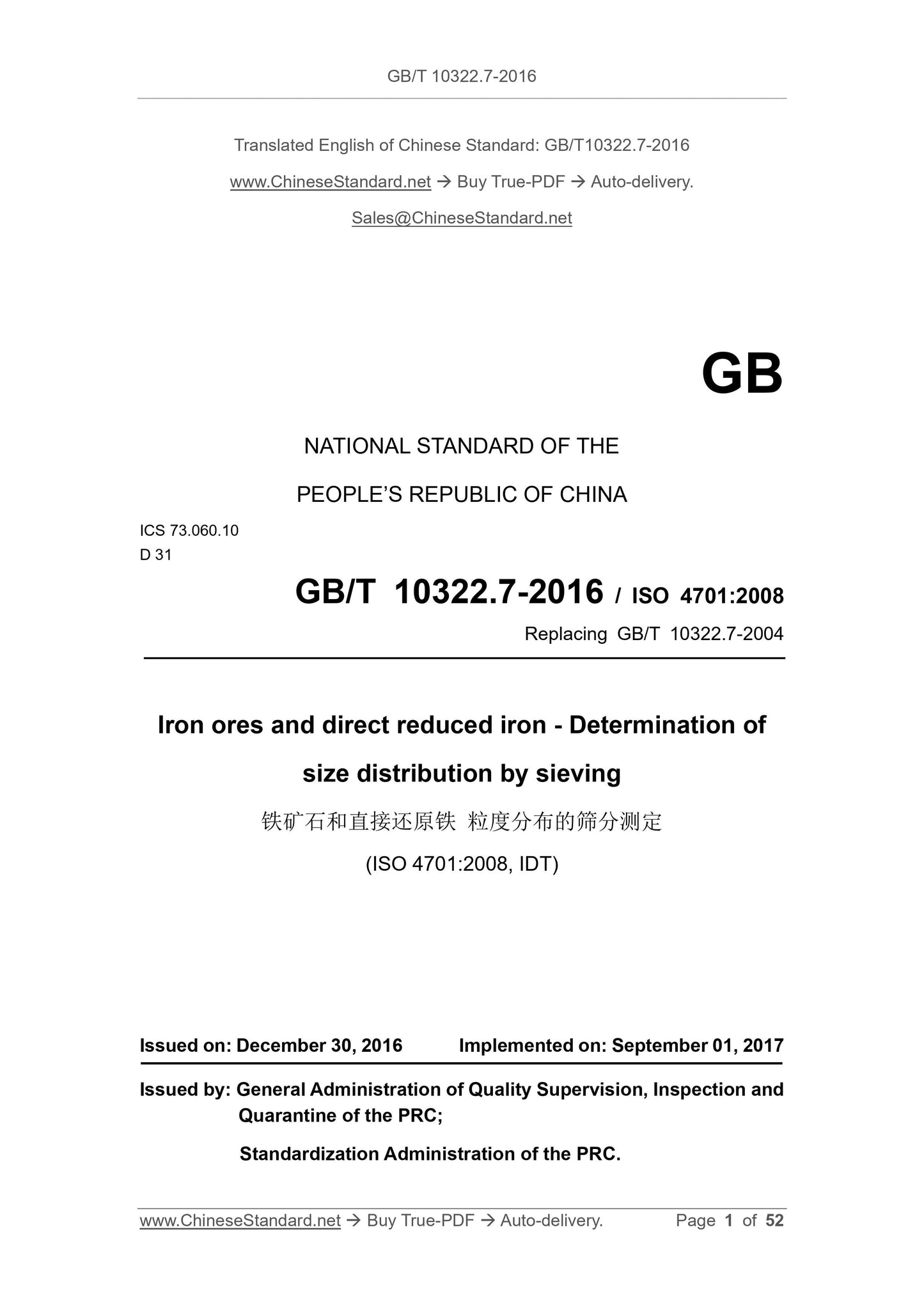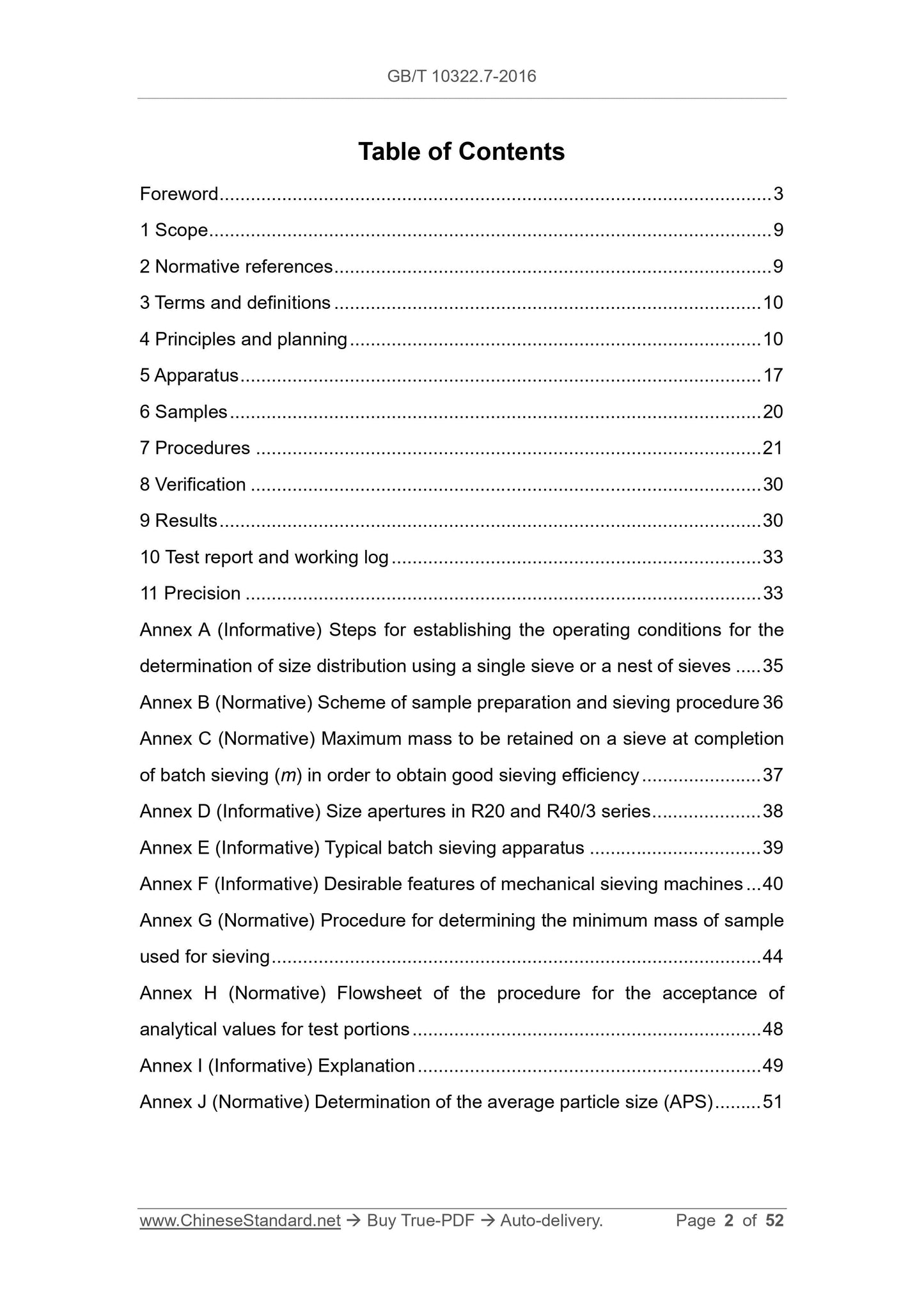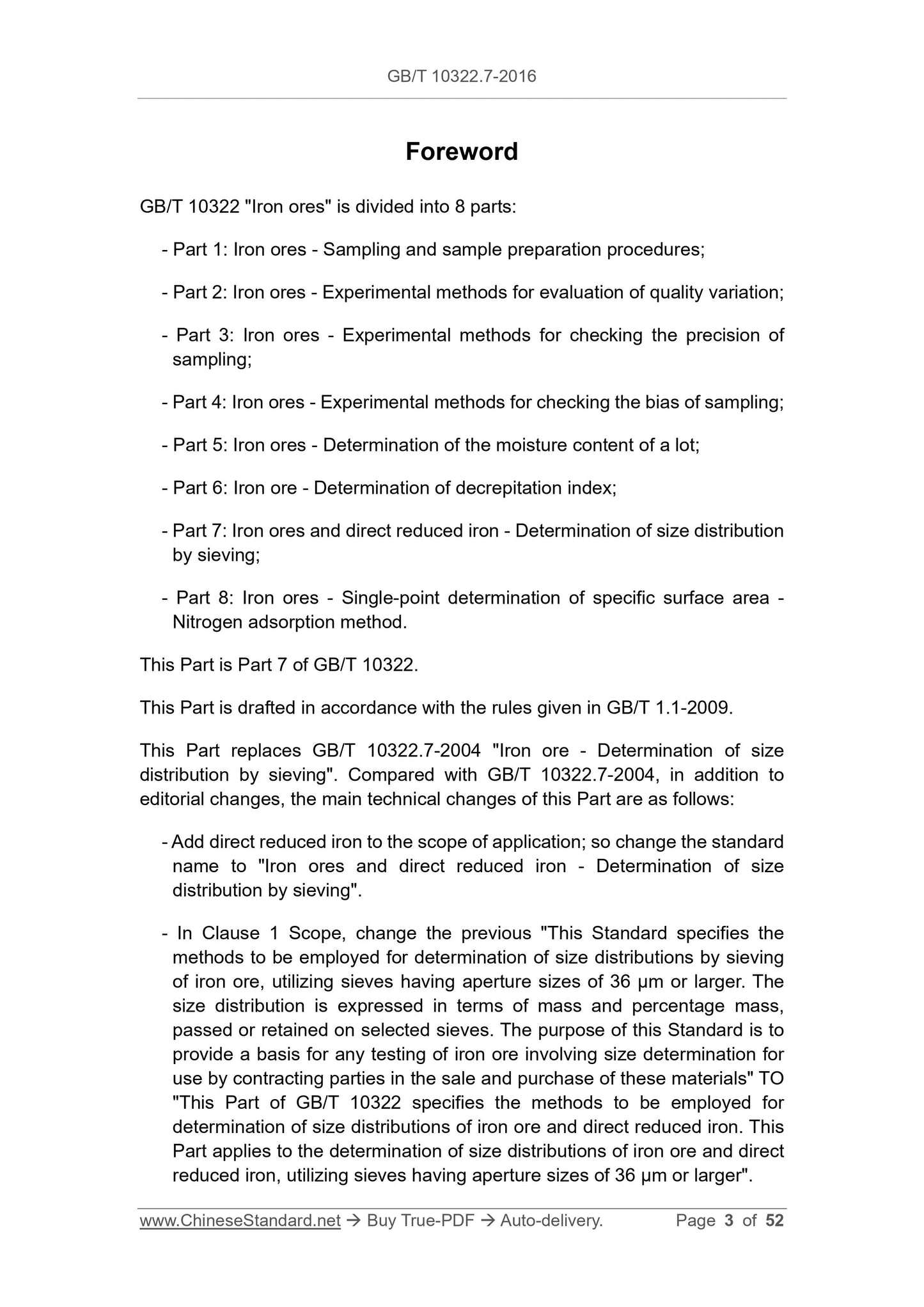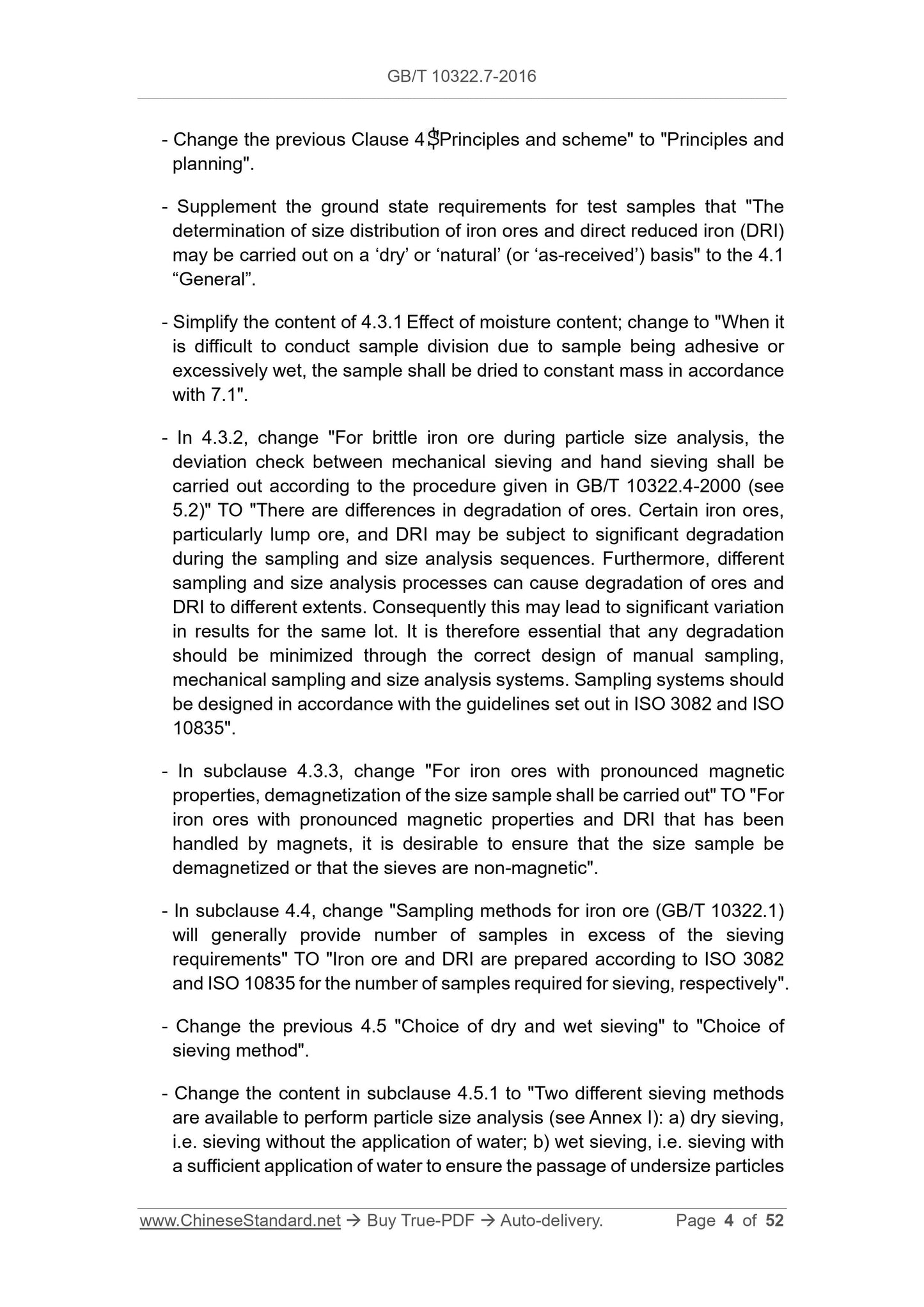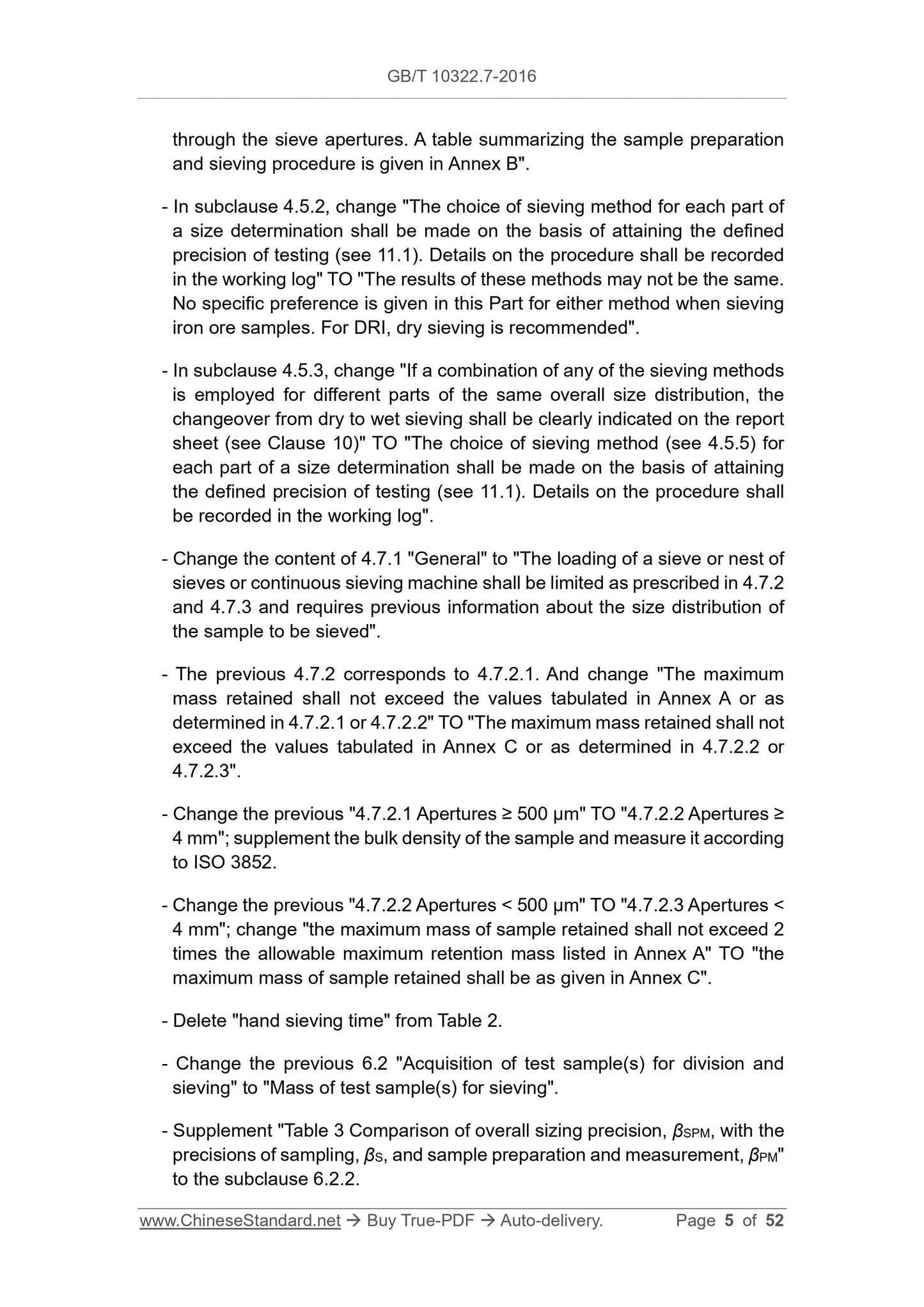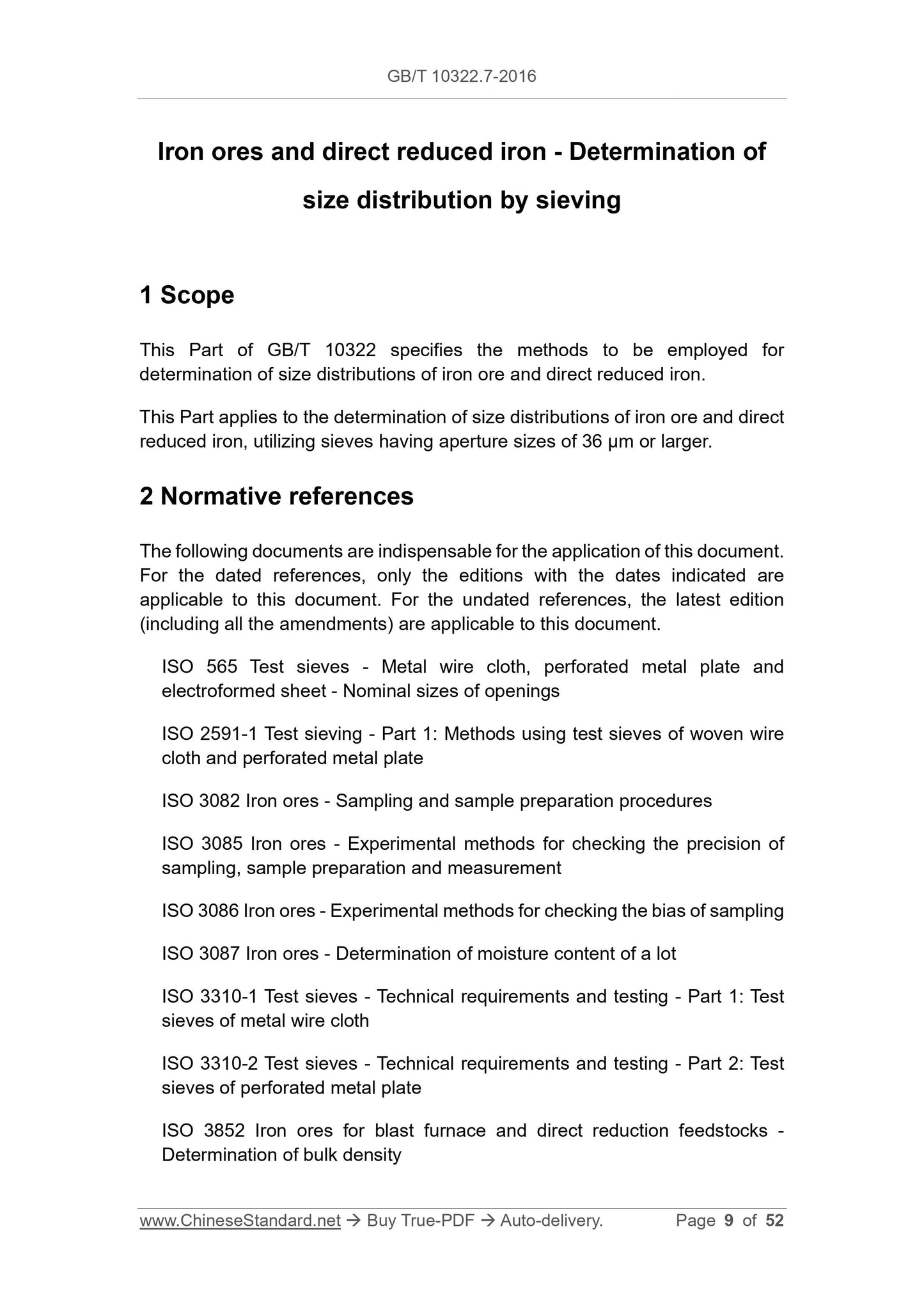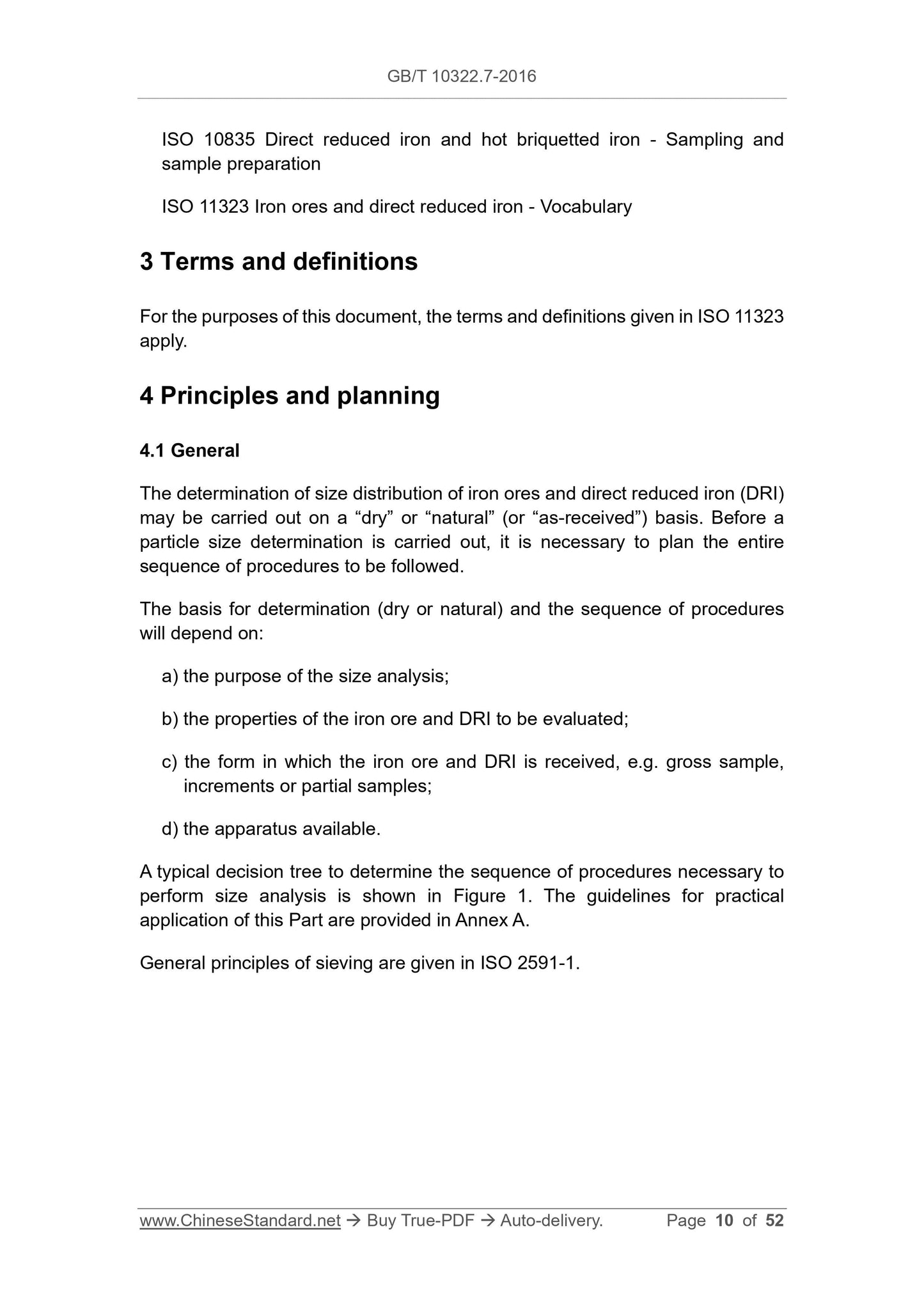1
/
of
7
www.ChineseStandard.us -- Field Test Asia Pte. Ltd.
GB/T 10322.7-2016 English PDF (GB/T10322.7-2016)
GB/T 10322.7-2016 English PDF (GB/T10322.7-2016)
Regular price
$560.00
Regular price
Sale price
$560.00
Unit price
/
per
Shipping calculated at checkout.
Couldn't load pickup availability
GB/T 10322.7-2016: Iron ores and direct reduced iron -- Determination of size distribution by sieving
Delivery: 9 seconds. Download (and Email) true-PDF + Invoice.Get Quotation: Click GB/T 10322.7-2016 (Self-service in 1-minute)
Newer / historical versions: GB/T 10322.7-2016
Preview True-PDF
Scope
This Part of GB/T 10322 specifies the methods to be employed fordetermination of size distributions of iron ore and direct reduced iron.
Basic Data
| Standard ID | GB/T 10322.7-2016 (GB/T10322.7-2016) |
| Description (Translated English) | Iron ores and direct reduced iron -- Determination of size distribution by sieving |
| Sector / Industry | National Standard (Recommended) |
| Classification of Chinese Standard | D31 |
| Classification of International Standard | 73.060.10 |
| Word Count Estimation | 38,380 |
| Date of Issue | 2016-12-30 |
| Date of Implementation | 2017-09-01 |
| Older Standard (superseded by this standard) | GB/T 10322.7-2004 |
| Regulation (derived from) | National Standard Notice No.27 of 2016 |
| Issuing agency(ies) | General Administration of Quality Supervision, Inspection and Quarantine of the People's Republic of China, Standardization Administration of the People's Republic of China |
Share
